
A railcar is a self-propelled railway vehicle designed to transport passengers. The term "railcar" is usually used in reference to a train consisting of a single coach, with a driver's cab at one or both ends. Some railway companies, such as the Great Western, termed such vehicles "railmotors".
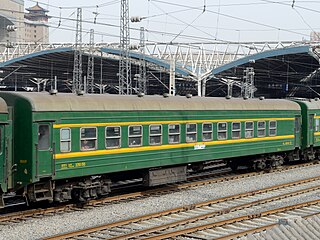
A railroad car, railcar, railway wagon, railway carriage, railway truck, railwagon, railcarriage or railtruck, also called a train car, train wagon, train carriage or train truck, is a vehicle used for the carrying of cargo or passengers on a rail transport network. Such cars, when coupled together and hauled by one or more locomotives, form a train. Alternatively, some passenger cars are self-propelled in which case they may be either single railcars or make up multiple units.

A branch line is a secondary railway line which branches off a more important through route, usually a main line. A very short branch line may be called a spur line. Branch lines may serve one or more industries, or a city or town not located on a main line. Branch lines may also connect two or more main lines.

The Alaska Railroad is a Class II railroad that operates freight and passenger trains in the state of Alaska. The railroad's mainline runs between Seward on the southern coast and Fairbanks, near the center of the state. It passes through Anchorage and Denali National Park, to which 17% of visitors travel by train.
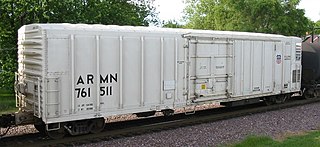
A refrigerator car is a refrigerated boxcar (U.S.), a piece of railroad rolling stock designed to carry perishable freight at specific temperatures. Refrigerator cars differ from simple insulated boxcars and ventilated boxcars, neither of which are fitted with cooling apparatus. Reefers can be ice-cooled, come equipped with any one of a variety of mechanical refrigeration systems, or utilize carbon dioxide as a cooling agent. Milk cars may or may not include a cooling system, but are equipped with high-speed trucks and other modifications that allow them to travel with passenger trains.

An autorack, also known as an auto carrier, is a specialized piece of railroad rolling stock used to transport automobiles and light trucks. Autoracks are used to transport new vehicles from factories to automotive distributors, and to transport passengers' vehicles in car shuttles and motorail services, such as Amtrak's Auto Train route.

A flatcar (US) is a piece of rolling stock that consists of an open, flat deck mounted on a pair of trucks (US) or bogies (UK), one at each end containing four or six wheels. Occasionally, flat cars designed to carry extra heavy or extra large loads are mounted on a pair of bogies under each end. The deck of the car can be wood or steel, and the sides of the deck can include pockets for stakes or tie-down points to secure loads. Flatcars designed for carrying machinery have sliding chain assemblies recessed in the deck.

The Merchant Marine Act of 1920 is a United States federal statute that provides for the promotion and maintenance of the American merchant marine. Among other purposes, the law regulates maritime commerce in U.S. waters and between U.S. ports. Section 27 of the Merchant Marine Act is known as the Jones Act and deals with cabotage. It requires that all goods transported by water between U.S. ports be carried on ships that have been constructed in the United States and that fly the U.S. flag, are owned by U.S. citizens, and are crewed by U.S. citizens and U.S. permanent residents. The act was introduced by Senator Wesley Jones. The law also defines certain seaman's rights.
Cabotage is the transport of goods or passengers between two places in the same country. It originally applied to shipping along coastal routes, port to port, but now applies to aviation, railways, and road transport as well.
Various terms are used for passenger railway lines and equipment; the usage of these terms differs substantially between areas:

United States border preclearance is the United States Department of Homeland Security's (DHS) practice of operating prescreening border control facilities at airports and other ports of departure located outside of the United States pursuant to agreements between the United States and host countries. Travelers are subject to immigration and customs inspections by Customs and Border Protection (CBP) officers before boarding their transportation onward to the United States. Preclearance applies to all passengers regardless of their nationality or purpose of travel. Upon arrival, precleared passengers arrive in the United States as domestic travelers, but may still be subject to re-inspection at the discretion of CBP. This process is intended to streamline border procedures, reduce congestion at American ports of entry, and facilitate travel into airports that otherwise lack immigration and customs processing facilities for commercial flights.
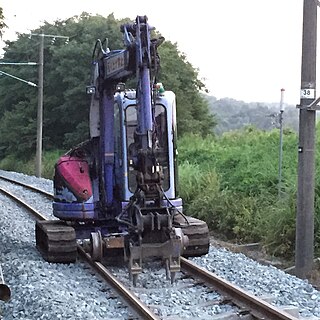
For 'railroad vehicle' see railroad car
This article discusses transportation in the U.S. state of Alaska.
Colorado Railcar was a manufacturer of railroad rolling stock—railcars and diesel multiple unit commuter vehicles. Both products came in single- and double-level versions. It shut down in 2008, with its assets being purchased by US Railcar.

A mixed train or mixed consist is a train that contains both passenger and freight cars or wagons. Although common in the early days of railways, by the 20th century they were largely confined to branch lines with little traffic. Typically, service was slower, because mixed trains usually involved the shunting (switching) of rolling stock at stops along the way. However, some earlier passenger expresses, which also hauled time-sensitive freight in covered goods wagons (boxcars), would now be termed mixed trains. Generally, toward the end of the mixed train era, shunting at intermediate stops had significantly diminished. Most railway passenger and freight services are now administered separately.

The Alaska pollock or walleye pollock is a marine fish species of the cod genus Gadus and family Gadidae.

American Seafoods Group, LLC (ASG) is an American seafood company. Based in Seattle, Washington, ASG owns and operates six large catcher-processor vessels that harvest and process onboard fish caught in the U.S. waters of Alaska and the Pacific Northwest. American Seafoods Company is the largest harvester in the U.S. Bering Sea Alaska pollock fishery with approximately 45% of the catcher-processor market share.
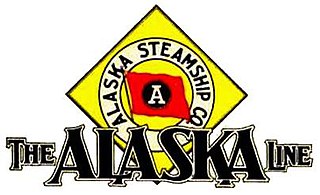
The Alaska Steamship Company was formed on August 3, 1894. While it originally set out to ship passengers and fishing products, the Alaska Steamship Company began shipping mining equipment, dog sleds, and cattle at the outbreak of the Klondike Gold Rush of 1897. The company was purchased by the Alaska Syndicate and merged with the Northwestern Steamship Company in 1909, but retained its name, and the fleet was expanded to 18 ships. During World War II, the government took over the company's ships. When the war ended, the company struggled to compete with the new Alaska Highway for passengers and freight. It discontinued passenger service altogether in 1954 and shut down operations in 1971.
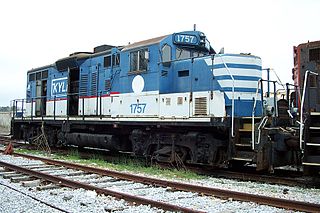
A shortline railroad is a small or mid-sized railroad company that operates over a relatively short distance relative to larger, national railroad networks. The term is used primarily in the United States and Canada. In the former, railroads are categorized by operating revenue, and most shortline railroads fall into the Class III or Class II categorization defined by the Surface Transportation Board.

The CG Railway is a terminal railroad as reported by the Association of American Railroads. The CGR is headquartered in Mobile, Alabama, and is owned and operated by a 50/50 joint venture between SEACOR Holdings and Genesee & Wyoming. The railroad operates an approximate 900-mile train ferry between the Port of Mobile at Mobile, Alabama, and the Port of Coatzacoalcos in Coatzacoalcos, Veracruz. It began operations in 2000 out of Mobile, Alabama. In 2004 the railroad moved its American port to New Orleans, Louisiana. The Port of New Orleans facility was heavily damaged by Hurricane Katrina in 2005. In 2007 the Alabama State Port Authority agreed to construct a state of the art $19 million rail-ferry terminal at the Port of Mobile. The CGR connects with CSX Transportation, Norfolk Southern, BNSF Railway, Canadian National Railway, and Alabama and Gulf Coast Railway all at Mobile, Alabama, and Ferrocarril del Sureste at Coatzacoalcos, Veracruz.
















